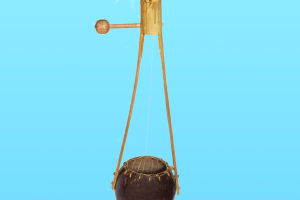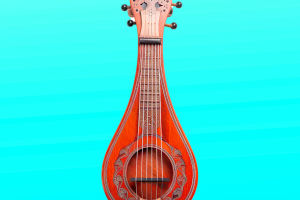Beethoven is a towering figure in the history of piano sonata composition.
His piano sonatas not only achieve a high level of musical technique and expressiveness but also explore many new possibilities in form and emotional expression.
Below, we will examine Beethoven's five most famous piano sonatas, which not only showcase his musical talent but also reflect his significant contributions to the development of music.
1. "Pathétique"
Composed in 1798-1799, the "Pathétique Sonata" is one of Beethoven's most important early works. The full title is "Piano Sonata No. 8 in C Minor, Op. 13," and the sonata is renowned for its profound emotion and dramatic quality.
The first movement begins with a strong motif, filled with tension and intense emotional conflict. The second movement is a gentle adagio, demonstrating Beethoven's mastery of lyrical expression. The final movement is a lively rondo, showcasing Beethoven's creativity and technical skill.
2. "Moonlight"
Composed in 1801, the "Moonlight Sonata" is officially titled "Piano Sonata No. 14 in C-sharp Minor, Op. 27, No. 2," and is widely known as the "Moonlight Sonata" due to the unique style of its first movement. The first movement, with its soft triplets and delicate emotion, evokes the serenity and dreaminess of moonlight.
The second movement is a light and lively allegretto, while the third movement is a vigorous presto, demonstrating Beethoven's fluid transition between different emotional states. The "Moonlight Sonata" represents an elegant and rich emotional expression typical of Beethoven's middle period.
3. "Appassionata"
Composed in 1804-1805, the "Appassionata" Sonata is one of Beethoven's most dramatic and passionate piano sonatas. The full title is "Piano Sonata No. 23 in F Minor, Op. 57," and the name "Appassionata" aptly reflects its intense emotion and vigorous musical style.
The first movement features strong motifs and conflict, the second movement is a graceful interlude, and the third movement concludes with a tempestuous presto, providing a musical climax and explosion. This sonata pioneered many new expressive techniques and is a milestone in Beethoven's creative output.
4. "Les Adieux"
Composed in 1809-1810, the "Les Adieux" Sonata is formally titled "Piano Sonata No. 10 in E-flat Major, Op. 81a." It consists of three movements: the "Farewell," the "Absence," and the "Return."
The title of this sonata reflects Beethoven's grand musical vision and showcases the maturity of his musical thought and personal style. The first movement is known for its profound emotion and complex structure, the middle section of the second movement is full of contemplation and reflection, and the final movement exhibits Beethoven's innovative and experimental approach to musical form.
5. "Last Sonata"
Composed in 1821-1822, the "Last Sonata" is the pinnacle of Beethoven's late-period compositions. Officially titled "Piano Sonata No. 32 in C Minor, Op. 111," this sonata consists of two movements: the first is a dramatic theme with variations, and the second is an enchanting set of variations.
This sonata showcases Beethoven's profound thoughts and technical maturity in his later years, reaching new heights in musical form and emotional expression. The second movement’s variation section is considered one of the most imaginative and expressive passages in Beethoven's music.
Conclusion
Beethoven's piano sonatas are not only treasures of classical music but also milestones in piano literature.
Through analyzing the "Pathétique Sonata," "Moonlight Sonata," "Appassionata," "Les Adieux," and "Last Sonata," we can see Beethoven's significant progress in musical expressiveness and compositional technique. His works not only display his musical genius but also provide a rich source of inspiration and technical foundation for later musicians.


